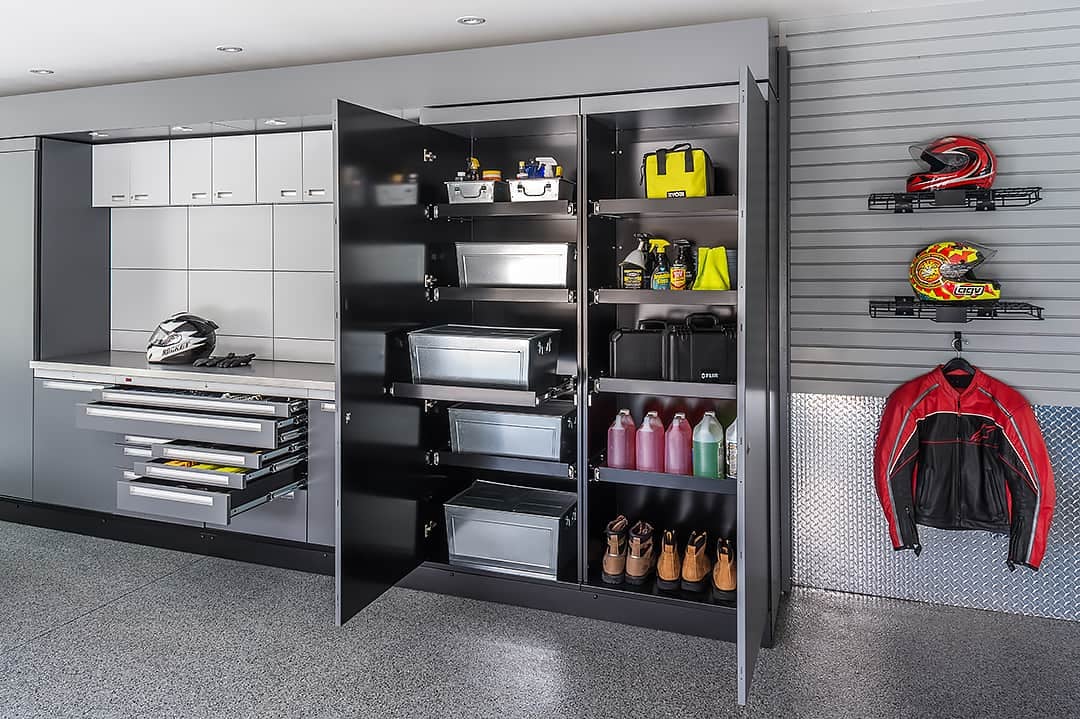
Garages are meant to be one of the home’s most functional spaces.
And it’s because garages are so active that they also require diligence and effort in order to keep them as safe as possible.
Things are constantly getting moved in garages, work is getting done inside of them, vehicles are regularly coming and going…the list goes on and on in terms of the safety considerations this busy space requires.
How a garage is designed and put together also brings up other safety considerations that warrants some attention from any homeowner.
13 garage safety tips for a safer home
Take the time to thoroughly assess how safe your garage is for you and your family by going through our list of 13 garage safety tips.
These garage safety tips are even more important to follow if you have children. Take the time to educate your kids on any safety hazards that may exist in your own garage.
See how your garage and how you use it measures up to our list of recommendations.
1. Lock up hazardous materials
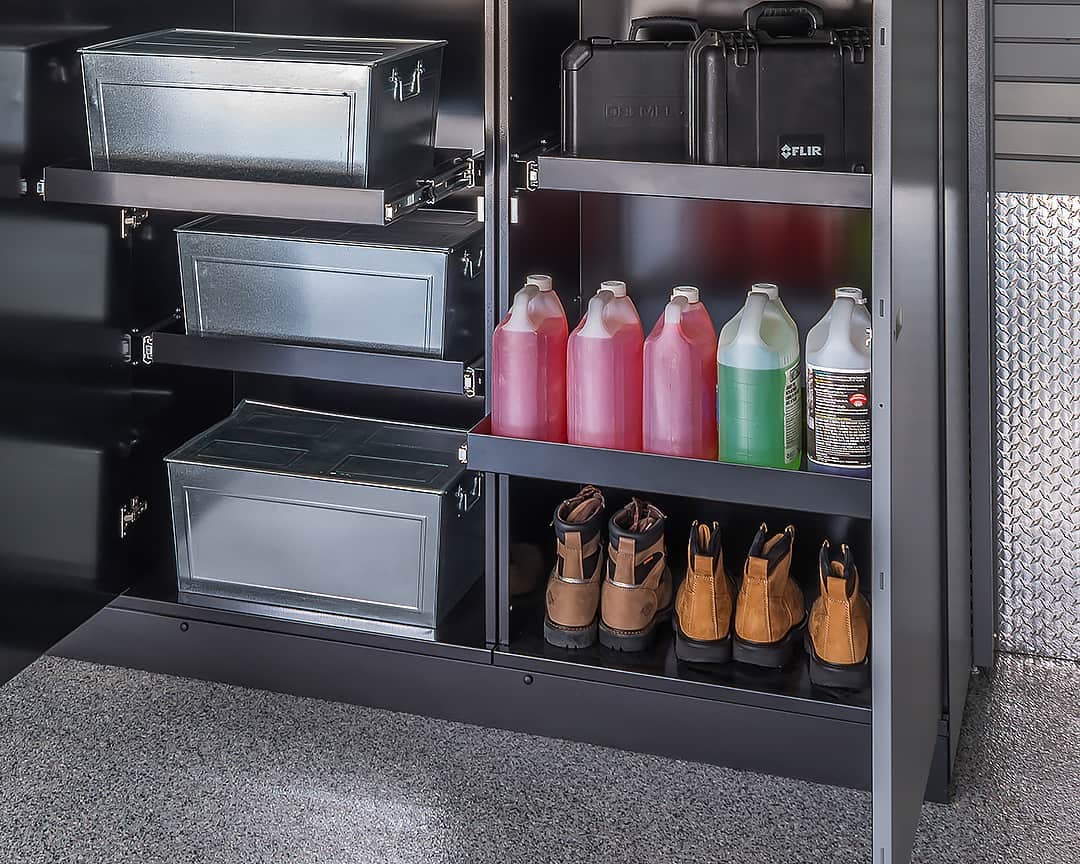
All garages contain many different types of hazardous material products that need to be stored responsibly. Fertilizers, pesticides, gasoline, cleaning products, pool cleaning supplies, car maintenance fluids, and paints and solvents are just a few examples.
Store any hazardous chemicals and materials in an appropriately safe spot, either up high and out of the reach of your kids and pets or in locked garage cabinets.
A locked shed with adequate venting might also be ideal for certain items, like bags of fertilizer or extra propane tanks. Makes sure to read the storage instructions on each product.
2. Store power tools safely
An unsupervised child might feel the urge to try out that big, noisy power tool they see mom or dad occasionally using in the garage.
Eliminate any safety concerns by making sure any power tools kept in the garage are properly stored so your kids can’t access them.
Garage storage cabinets with locks are the ideal solution and also help keep your expensive power tools more secure from theft.
For larger power tools that can’t be locked in a cabinet like, say, a stationary band saw or a bigger portable table saw, make sure their safety locking mechanisms work properly.
For an extra level of safety protection, you could also disconnect the stationary tools from their power supply when you’re not using them.
3. Keep sharp tools safely stored
In addition to ensuring safe, secure storage of your power tools, take the same care to make sure any sharp yard tools or hand tools are stored safely.
After a long day of yard work, it’s easy to get a little careless and just lean your tools or a ladder against the garage wall, or just stash them in a corner.
But rakes, shovels, pruners, and many other types of yard tools with sharp edges become garage safety hazards when they aren’t safely put away.
Invest in a proper storage system that allows all of your yard tools to be stored in a safe, organized manner.
A slatwall storage system works best for this purpose and keeps your garage floor clear (and therefore safer) by creating hanging space on your garage walls. Sharp hand tools can be stored in locked or upper garage cabinets.
4. Maintain a safe garage workspace
If you have a garage workshop, you’ll need to pay even more attention to how safe you’re leaving your garage.
In addition to following the aforementioned garage safety tips related to storage of your tools and hazardous materials, clean up your garage work area when you’re finished for the day.
Sweep up any spills, sawdust, and debris on your garage floor to prevent anyone from slipping. And properly dispose of any oily rags that may have been used during your work session.
Always use the appropriate eye, face, mask, and hand safety protection when working. And it’s also smart to keep a first-aid kit close at hand.
5. Inspect your garage doors and opener
Considering a garage door is a home’s largest moving object, it only makes sense to give it some close attention when you’re evaluating how safe your garage is.
Here a few garage safety tips for your garage doors:
- periodically inspect your garage door springs and cables for excessive wear
- keep garage door opener remotes out of the reach of children
- know where the emergency release handle for your doors is and how to use it
- check that your garage door photo eye sensors are properly aligned, clean, and unobstructed
- test the auto-reverse safety feature on your garage doors and opener monthly
6. Deal with your garage clutter
Garage clutter doesn’t only make it difficult to find things and prevent you from parking your vehicles in the garage. All that junk also poses several safety hazards.
First, there’s the very real danger of clutter that’s stacked too highly falling over and injuring someone. Even brand new cardboard boxes aren’t the most stable storage container to be stacking and they only deteriorate over time.
Secondly, too much garage clutter (especially boxes, newspaper and magazine bundles, and flammable materials) also makes your garage more of a fire hazard.
Leaving too much clutter on your garage floor is also a tripping hazard.
Get your space straightened up and clutter-free by making use of the numerous helpful garage storage systems available, such as slatwall, storage racks, or a cabinet system.
7. Dispose of old paints and chemicals
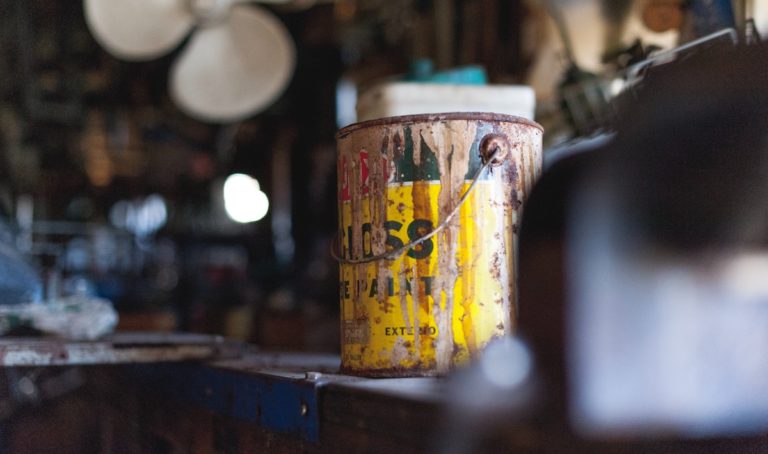
If you’ve lived in the same house for awhile, you’re sure to have compiled a collection of empty and half-used paint cans, solvents, cleaners, spray paint cans, and other items that can’t just be thrown in the trash.
And if you’re the hands-on type and like doing your own vehicle maintenance, there are probably a few old car batteries, vehicle parts, and tires lying around your garage.
Taking the time to deal with what may be many years worth of accumulated hazardous materials clutter in your garage will free up valuable space.
Finally taking these old hazardous materials to your local recycling or disposal depot will also remove potential poisoning and fire hazards from your garage.
8. Use well-anchored storage systems
Proper garage storage systems will help you stay organized, but they need to be up to the task of handling the heavy weight capacities of the items you’re storing.
That means making sure the garage storage systems you use are well-anchored, whether they’re wall-mounted or ceiling-mounted.
Say you’re storing your extra set of winter or summer tires on a wall-mounted tire rack, for example. The weight of a 17″ tire with a rim is around 40 lbs. Multiply that times four and you’ll see why safely anchoring your storage system is so important.
For overhead garage storage of large, heavy items, the safety considerations for your overhead storage racks is just as important.
Garage Living use racks with heavy gauge steel construction that can support up to 600 lbs, which we install to adhere to the strictest safety standards.
9. Garage lighting
One of the less obvious garage safety tips you might not have considered is to simply improve your garage lighting.
Relying on one or two incandescent light bulbs or a flickering fluorescent light to illuminate your entire garage is an outdated concept.
There are many modern garage lighting ideas available that can make your garage easier to function within, which makes it safer.
A modern LED light fixture or two, for example, will provide better energy efficiency and more uniform lighting for your garage.
Everything from driving in and out of the garage, working with tools, and finding a specific tool becomes that much easier when you can actually see what you’re doing.
10. Take proper fire safety measures
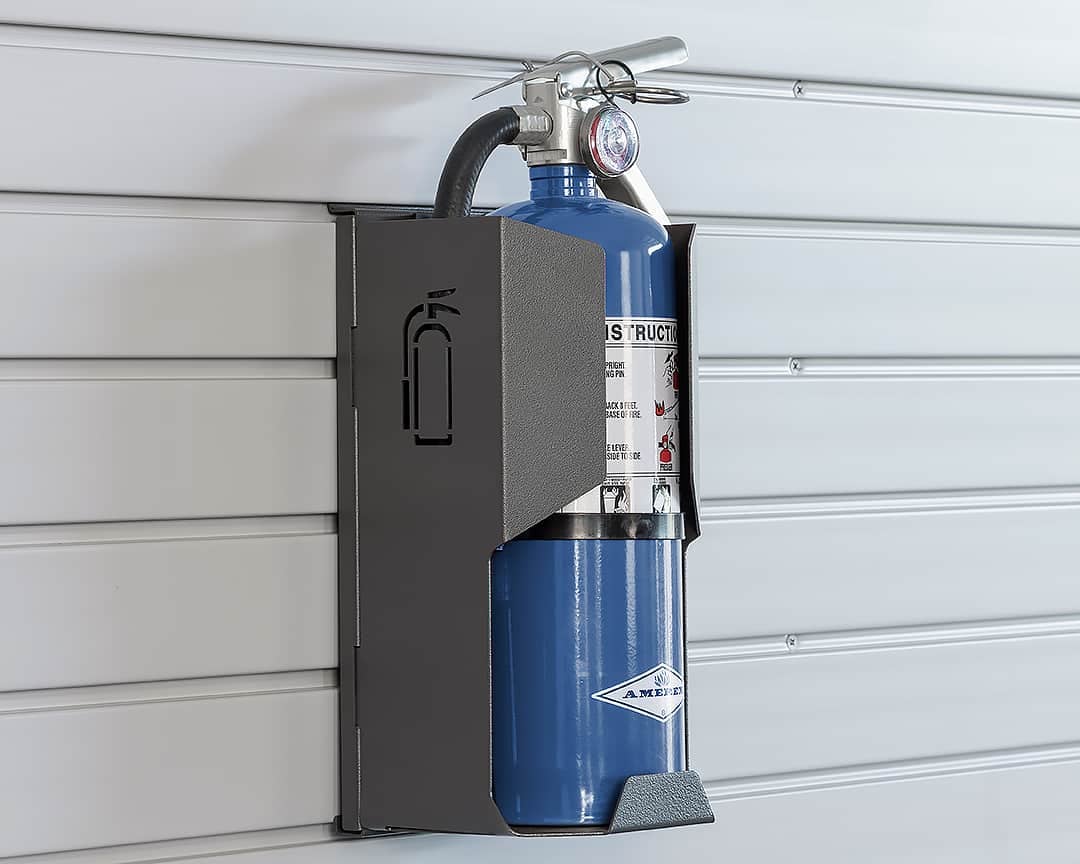
Hopefully you’ll followed a few of these garage safety tips to remove some fire hazards from your garage.
Even if you are keeping garage fire hazards to a minimum, take some additional proactive fire safety measures. A heat detector alarm or smoke alarm are a wise investment for your garage.
Another great investment is a fire extinguisher for the garage. If you live in a colder climate, make sure to get a model that can be stored in lower temperatures.
Otherwise, keep a standard fire extinguisher just inside your home’s garage access door. Make sure anyone old enough to operate the device is properly trained on how to use it.
11. Limit your garage’s carbon monoxide exposure
Carbon monoxide from vehicle emissions doesn’t pose a health risk in the small amounts that are generated by vehicles being started and parked in garages.
It’s when vehicles are left to run for longer than recommended periods in the garage that safety becomes an issue. That’s why you should think twice about warming up or idling your vehicles indoors for extended periods, even with your garage doors open.
This harmful odorless and colorless gas can also build up if you’re running any gas-powered tools or recreational vehicles in your garage.
If you’re doing maintenance on a lawn mower, grass trimmer, or anything else run by gas, be mindful of not running them for too long in the garage.
And operating any type of barbecue in your garage (possibly to cover yourself from inclement weather) is a huge no-no. Aside from the obvious fire hazards, charcoal grills generate high levels of carbon monoxide.
Consider installing a carbon monoxide detector that’s specifically made for garages.
12. Keep a well-maintained garage floor
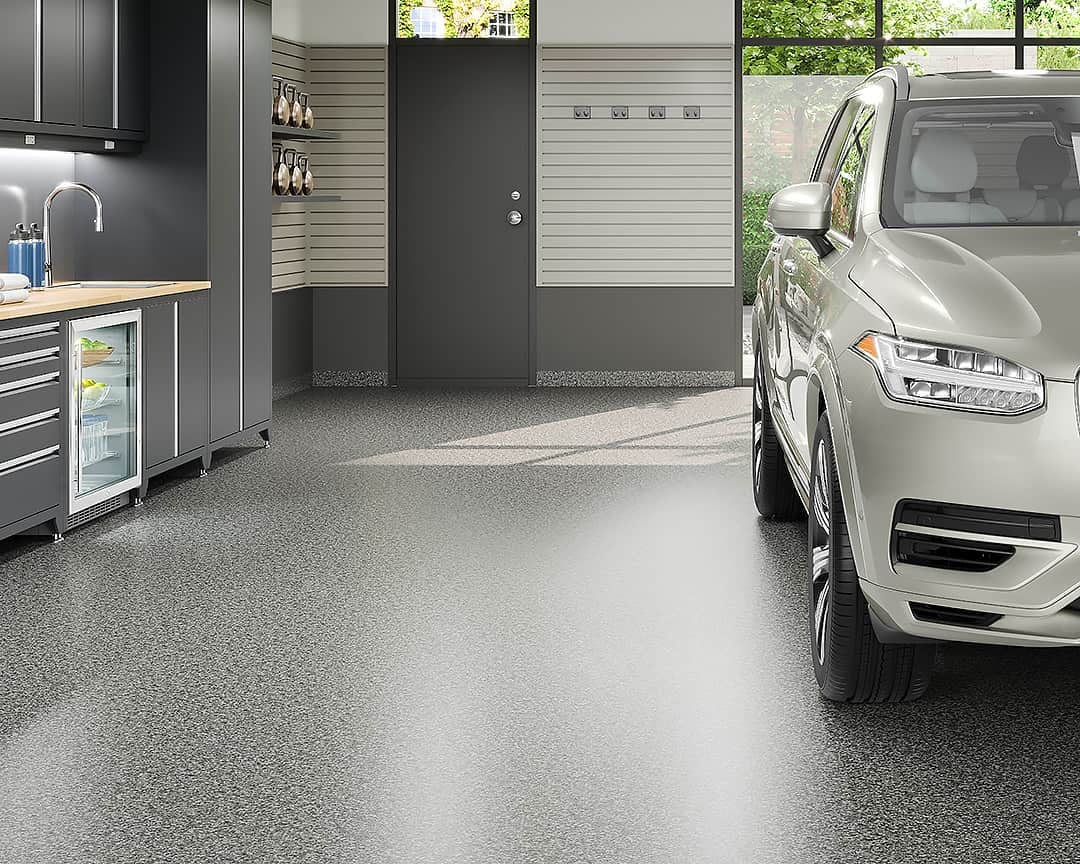
Another overlooked area when it comes to garage safety is the garage floor.
A garage floor surface with cracks and missing chunks of cement doesn’t just look terrible, it also presents a major tripping hazard.
You could stub a toe or, even worse, take a serious fall without having an even and unbroken surface to walk on.
If you look around for the best garage floor coating available, you’ll find a polyaspartic garage floor coating is superior to an epoxy coating in several ways.
Polyaspartic floor coatings are more durable and easier to maintain, with a higher resistance to household chemicals and abrasion damage.
You’ll also get better traction, which makes your garage floor safer when it’s wet. It goes without saying that you should attend to spills and pools of water on your garage floor right away.
And since we’re discussing garage safety, it’s worth mentioning that polyaspartic floor coatings also emit a very low level of VOCS (volatile organic compounds). Those are the chemicals found in many household products that are slowly released into the air.
13. Replace old electrical cords
The last of our garage safety tips involves getting rid of any old, frayed electrical cords that have seen better days.
They’re not just a fire hazard, they’re also a shock hazard.
Be diligent with what type of power cord you’re using with a specific tool or for a particular job. Make sure a cord with the correct gauge is being used for the tool or appliance you’re using.
Avoid overloading your garage outlets with charging devices and extension cords. And if your garage’s electrical wiring and infrastructure is especially old, don’t wait until an accident happens to get them updated.
Make your garage safer and more functional
We hope these garage safety tips are beneficial to you in order to make your garage a safer space.
For creative makeover ideas that make your garage look incredible, more functional, and much safer, book a free design consultation with Garage Living.